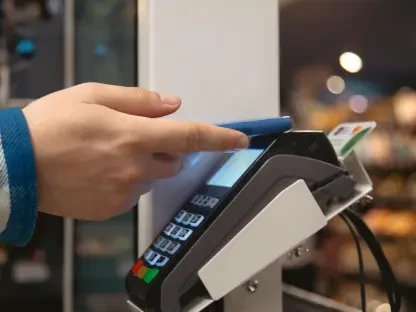Setting the Stage for Retail Media Transformation
In an era where digital advertising budgets are projected to surpass traditional media spending, the retail industry faces a pressing challenge: how to effectively connect brands with consumers amidst a fragmented e-commerce landscape. Retail media automation has emerged as a pivotal solution, leveraging advanced technologies to streamline advertising efforts across diverse retailer platforms. This review delves into the intricacies of this transformative technology, examining its core functionalities, real-world impact, and the potential it holds for reshaping retail advertising.
The significance of retail media automation lies in its ability to address the complexities of managing campaigns across multiple retail networks. By integrating artificial intelligence and data-driven tools, this technology offers advertisers unprecedented control over their strategies. The following sections provide a comprehensive analysis of its features, recent trends, and the challenges that accompany its adoption, setting the stage for a deeper understanding of its role in modern retail.
Core Components and Capabilities
Streamlined Campaign Management
Retail media automation stands out for its ability to simplify the intricate process of campaign execution across various retail platforms. At the heart of this technology are tools designed for efficient campaign activation, optimization, and real-time monitoring. These systems enable advertisers to manage workflows seamlessly, reducing manual effort and ensuring consistency when handling campaigns for multiple retailers.
A key advantage is the centralization of operations, which allows brands to oversee advertising efforts from a single interface. This eliminates the need to navigate disparate systems, saving time and minimizing errors. Such efficiency is critical in a fast-paced market where timely adjustments can make the difference between a successful campaign and a missed opportunity.
Tailored Metrics for Performance Tracking
Another defining feature of retail media automation is its focus on customized performance metrics, offering advertisers deeper insights into campaign outcomes. Innovations like the ‘Sales at Checkout’ metric provide a detailed view of sales data, aligning with specific retailer attribution models while maintaining compatibility for cross-platform comparisons. This dual functionality ensures that data remains actionable across different contexts.
The flexibility of reporting options further enhances decision-making by allowing users to toggle between various performance indicators. Whether assessing immediate sales impact or long-term consumer trends, these tools empower advertisers to make informed choices. The emphasis on data transparency underscores the technology’s value in delivering measurable results.
Evolving Trends in the Retail Media Space
Retail media automation continues to evolve, driven by a growing demand for unified management solutions, particularly in regions like Europe, the Middle East, and Africa (EMEA). Centralized platforms that offer a holistic view of performance across multiple retailers are gaining traction, enabling brands to align global strategies with local market nuances. This trend reflects an industry-wide shift toward integration and scalability.
Automation of bidding processes and budget pacing represents another significant development, reducing the burden of manual oversight. These advancements allow for real-time adjustments based on performance data, optimizing ad spend efficiency. As the technology matures, the balance between automation and human input remains a focal point for innovation.
Additionally, there is a noticeable move toward localized strategies within a globally integrated framework. Retail media automation platforms are increasingly designed to cater to regional preferences while maintaining consistency in overarching campaign goals. This adaptability positions the technology as a vital tool for navigating diverse markets.
Practical Impact Through Strategic Partnerships
The real-world application of retail media automation is vividly illustrated through partnerships like the collaboration between Pacvue and Tesco Media in the UK. This integration enables brands to manage sponsored product campaigns on Tesco’s platform directly within a unified system, streamlining operations alongside other major retail marketplaces. Such collaborations highlight the technology’s capacity to enhance precision in campaign execution.
Beyond operational efficiency, these partnerships foster improved consumer engagement by leveraging data insights to tailor advertising efforts. Brands benefit from a clearer understanding of customer behavior, allowing for more relevant and impactful messaging. The Tesco Media case exemplifies how automation can bridge the gap between brands and shoppers in a competitive retail environment.
Unique use cases are also emerging across other retail media networks, where automation facilitates innovative approaches to targeting and measurement. From optimizing product placements to refining audience segmentation, the technology proves versatile in addressing diverse advertising needs. These applications underscore its transformative potential on a global scale.
Navigating Challenges and Limitations
Despite its promise, retail media automation faces significant hurdles, particularly in integrating with disparate retailer systems. Technical complexities often arise when aligning data formats and operational workflows, posing challenges to seamless adoption. Addressing these integration issues remains a priority for developers aiming to broaden the technology’s reach.
Data privacy concerns and regulatory variations across markets add another layer of difficulty. Compliance with regional laws requires careful navigation to ensure that consumer information is handled responsibly. The industry is actively working on standardized practices to mitigate these risks and build trust among stakeholders.
Moreover, the rapid pace of technological change can outstrip the ability of some organizations to adapt, creating disparities in implementation. Overcoming these limitations necessitates ongoing innovation and collaboration between technology providers and retailers. Efforts to simplify adoption processes are crucial for ensuring equitable access to automation benefits.
Future Horizons and Potential Developments
Looking ahead, retail media automation is poised for significant advancements, particularly in the realms of artificial intelligence and data analytics. Enhanced predictive capabilities are expected to refine targeting precision, while deeper integration with emerging technologies could unlock new advertising possibilities. The trajectory from now to 2027 suggests a period of rapid evolution.
Broader adoption across global markets is also anticipated, as more retailers recognize the value of automation in driving efficiency. This expansion will likely be accompanied by tailored solutions that address specific regional needs, ensuring relevance in varied contexts. The technology’s scalability will be a key determinant of its long-term success.
The potential impact on retail advertising extends beyond operational gains, promising to redefine brand-consumer interactions. As automation tools become more sophisticated, they could enable hyper-personalized experiences that resonate with individual preferences. This vision of a connected, data-driven retail ecosystem offers a glimpse into the transformative power of the technology.
Reflecting on the Journey and Next Steps
Looking back, the exploration of retail media automation revealed a technology that has already made substantial strides in optimizing advertising within the retail sector. Its robust features, from advanced campaign management to custom metrics, have demonstrated tangible benefits in enhancing efficiency and consumer engagement. The strategic partnerships forged have further validated its practical impact across key markets.
As a path forward, stakeholders are encouraged to prioritize solutions that tackle integration challenges and privacy concerns, fostering greater collaboration between technology providers and retailers. Investing in scalable platforms that balance automation with human oversight emerges as a critical next step. By focusing on these areas, the industry can ensure that retail media automation continues to evolve as a cornerstone of modern advertising strategies.









